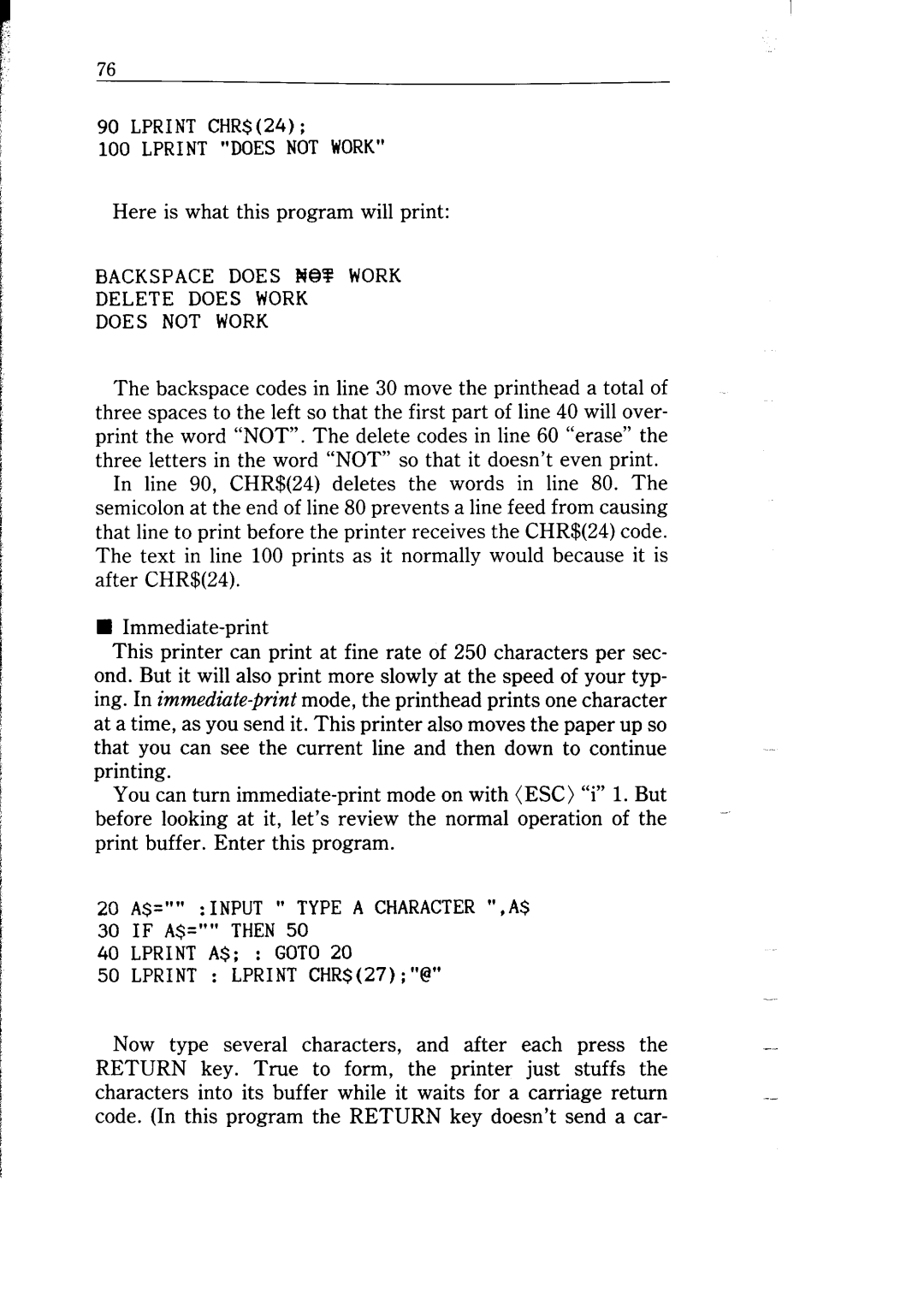
| 76 |
| |
I | 90 LPRINT CHR$(24); | ||
100 LPRINT "DOES NOT WORK" | |||
| |||
| Here is what this program will print: | ||
| BACKSPACE | DOES NM WORK | |
| DELETE DOES WORK | ||
| DOES NOT | WORK | |
The backspace codes in line 30 move the printhead a total of three spaces to the left so that the first part of line 40 will over- print the word “NOT”. The delete codes in line 60 “erase” the three letters in the word “NOT” so that it doesn’t even print.
In line 90, CHR$(24) deletes the words in line 80. The semicolon at the end of line 80 prevents a line feed from causing that line to print before the printer receives the CHR$(24) code. The text in line 100 prints as it normally would because it is after CHR$(24).
n
This printer can print at fine rate of 250 characters per sec- ond. But it will also print more slowly at the speed of your typ- ing. In
You can turn
20 A$="" :INPLJTw TYPE A CHARACTER ",A$ 30 IF A$="" THEN 50
40 LPRINT A$; : GOT0 20
50 LPRINT : LPRINT CHR$(27);"@"
Now type several characters, and after each press the RETURN key. True to form, the printer just stuffs the characters into its buffer while it waits for a carriage return code. (In this program the RETURN key doesn’t send a car-
